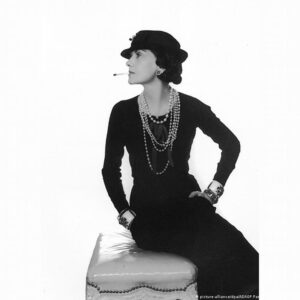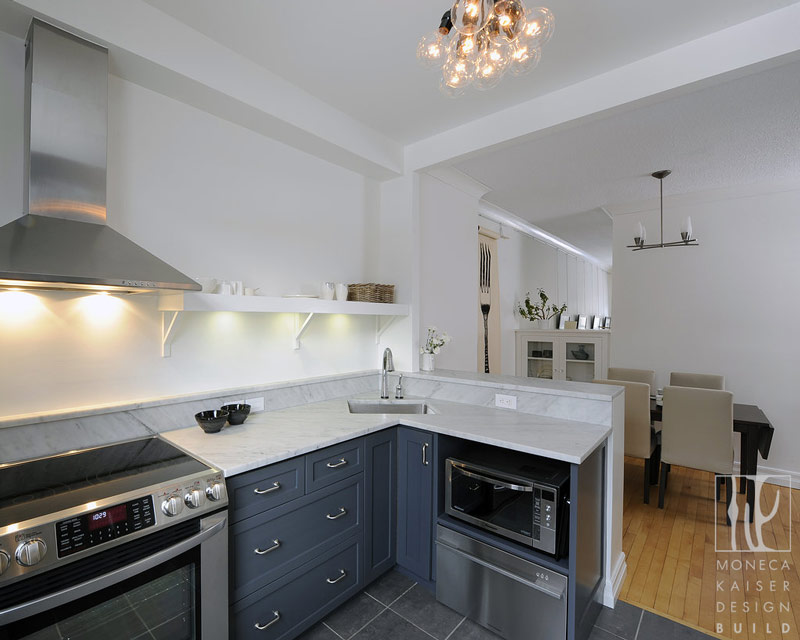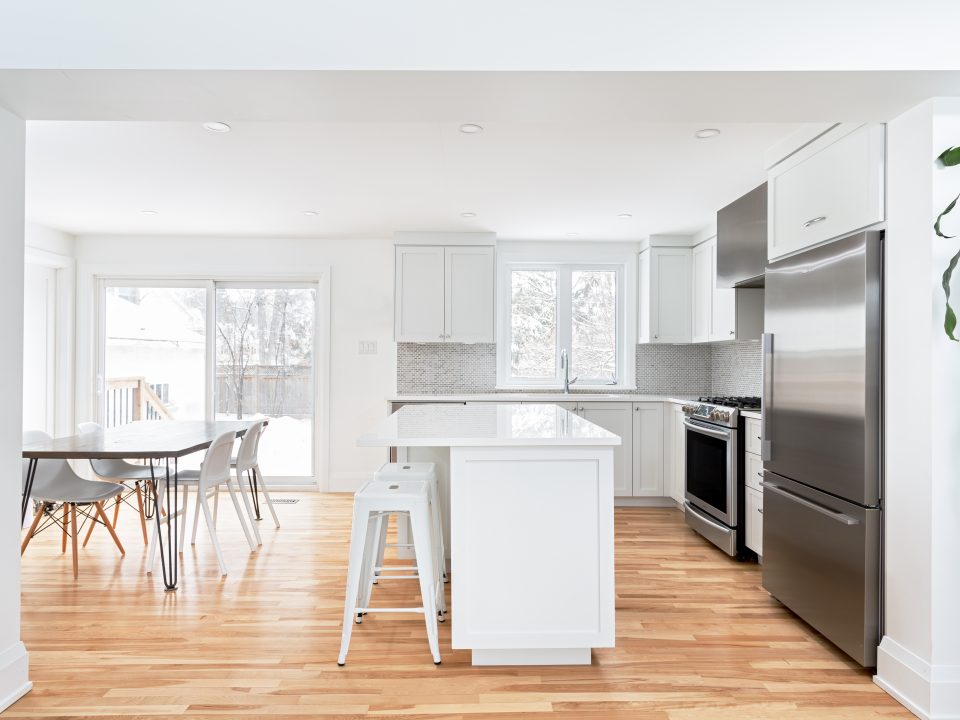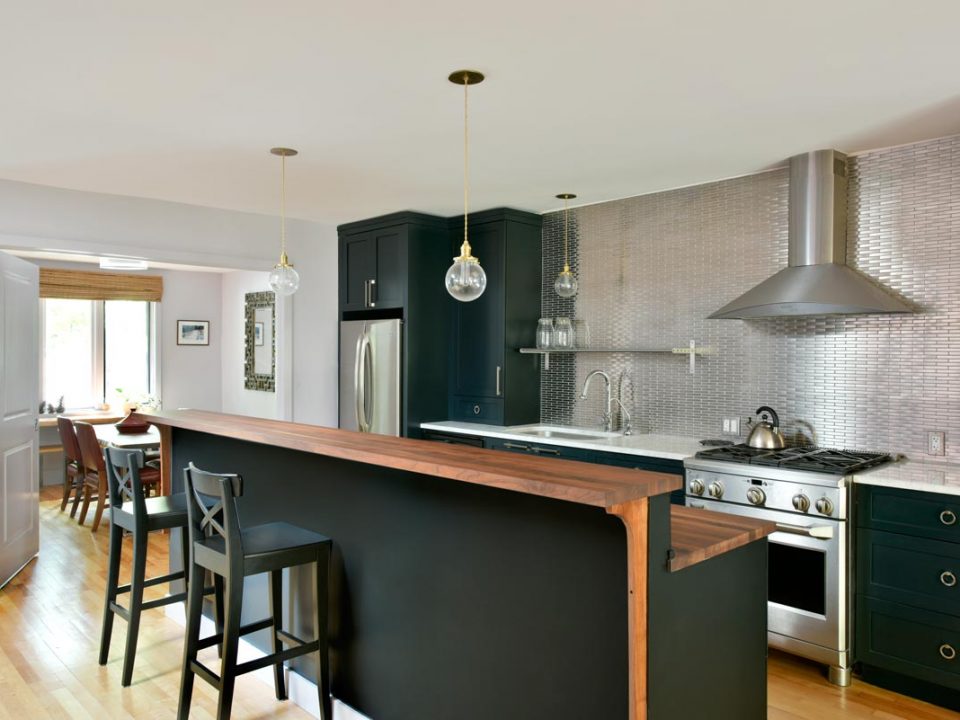
Little Black Dress for a Kitchen: Trends vs. Timeless Design
Fashion, like everything in this world, repeats itself. The acronym LBD (Little Black Dress) emerged in 1926, when Gabrielle “Coco” Chanel published a picture of a short, simple black dress in American Vogue. It was calf-length, straight and decorated only by a few diagonal lines. Vogue called it “Chanel’s Ford”. Like the Model T, the little black dress was simple and accessible for women of all social classes (Edelman, Holman, 1998).
 Coco Chanel with her first little black dress design, circa 1926
Coco Chanel with her first little black dress design, circa 1926
LBD came a long way since its first debut in American Vogue: it survived the Great Depression, predominantly through its economy and elegance; World War II, as a common uniform for civilian women entering the workforce; the sexual conservatism of the 1950s, as symbol of the dangerous woman; 1960s as a symbol of female power and sexual freedom; 1980s and 1990s, by embracing details already popular at the time, such as broad shoulders or peplums. The new glamour of the late 1990s led to new variations of the dress. The resurgence of body conscious clothing, muted colour schemes, and the reemergence of predominant black, along with the retrospective trends of the 1980s in the late 2000s paved way to the return of interest to the dress.
The word ‘fashion’ initially related to ‘fashioning something by skill or craft’. Now ‘fashion’ is predominantly used to represent a temporary ‘novel’ way of doing something, and often pertaining just to its appearance. Designers are often seduced by the idea of ‘radical innovation’, thinking it would change the way things would be done forever. But as we see now, ‘radical innovation’ quite often simply represents trend or fashion. As quickly as it comes in, it goes away again, only to return a few decades later. There is a danger of designing something for longevity that will become aesthetically out of fashion. If the design doesn’t hold deep personal and cultural meaning, it becomes useless as soon as the trend leaves the market.
This is why at MKDB, we strive for harmony, not trends. We listen and tune into the needs of our clients and community to design and build homes and products that foster harmony in our lives, relationships, community, environment and planet.
Every setting has a story to tell. MKDB closely studies landscapes and ecosystems as well as observes and interacts with families that inhabit them to become attuned and responsive to the genius of the biome and what it strives to be – what Lao Tzu, the founder of Taoism, called ‘the path of least resistance’ and what we understand harmony to be. Ecological communities are always in flux, so that they maintain a continual equilibrium with harmonious fluctuations. This dynamic balance provides resiliency in the face of ecosystem (as well as trend and fashion) change. Here is an example.
In our featured project, The Little Black Dress, the original designer got most of the basic structure right, but managed to overlook some of the key fundamentals of timeless design:
- Artificial vs. Natural Light: Vitruvius is one of the first great Architectural theorists, and in his Ten Books of Architecture, he puts a large emphasis on optics and the introduction of natural light. In the original design, the light from a large window was blocked by suspended cabinetry. Once that was removed, the rest of the original layout worked harmoniously with the space and provided ample natural light that was now allowed to spill in from the kitchen into their dinning and living space.
- Trends vs. Timeless Design: The finishes chosen were dated five years after the kitchen was completed. So we refinished the cabinets with a timeless black, and replaced the existing counter-top with durable, and classic granite that would surpass any trend – from the forever shifting fashion trends, to the wear and tear of the every day use.
Now that we are moving away from closed off rooms and towards open space living, it is important that we design these spaces so they can work with the many trends that come and go, not unlike the famous Little Black Dress.





2 Comments
LOVE the new blog post Alena, only thing is it’s a marble counter top not granite and its a choice that is a bit of a victim of fashion cause it’s fussy to take care of but so beautiful our flient fell in love with it and is resigned to allowing it to develop a flawed patina.
This brings the meaning of the word ‘marble’ (a.k.a. “a snow white and spotless stone”) to a whole new level (: